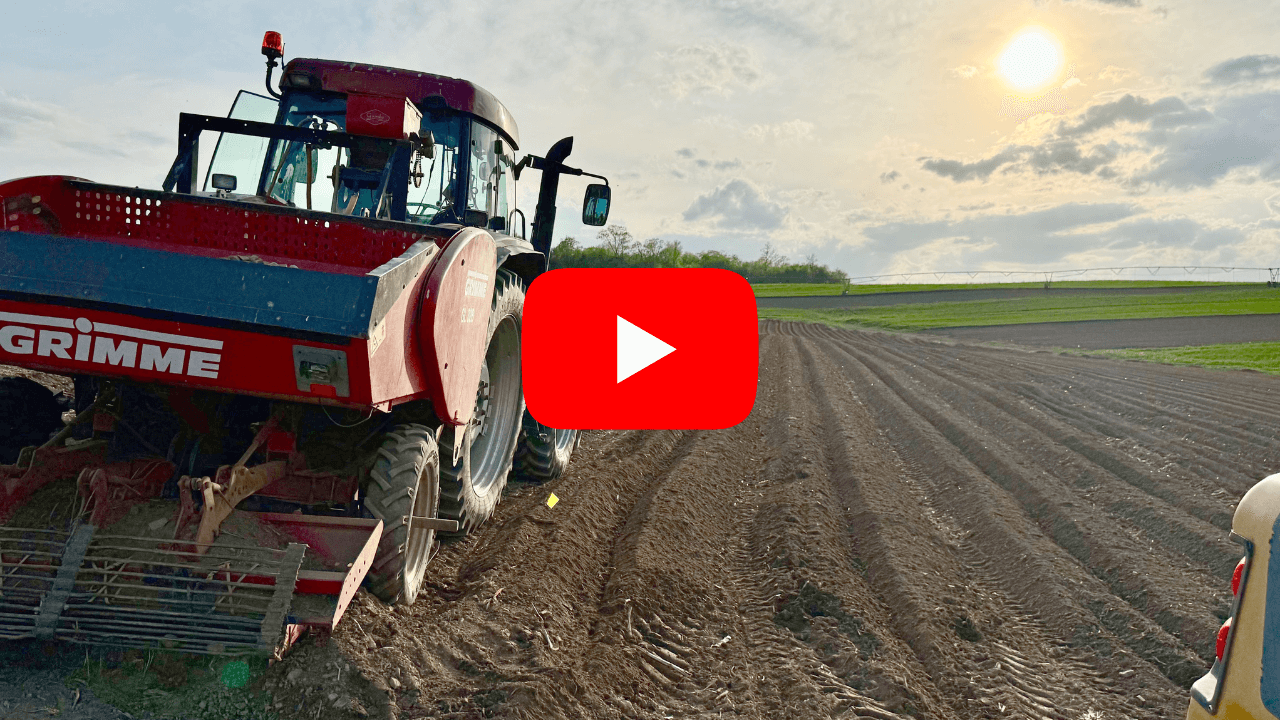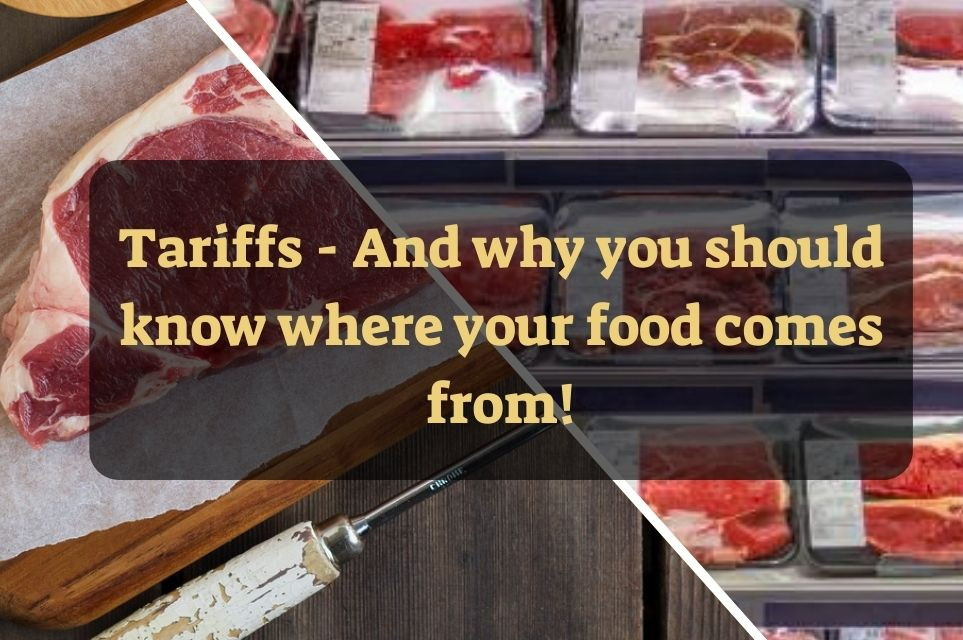While scrolling through one of my subscribed bi-weekly AG E-Newsletters, a headline caught my eye - “Chicken or the egg (or the drug)? - Research shows that a common diabetes medication for humans (metformin) can help broiler breeder hens produce more eggs.”
I was sitting across from my brother John, and words came out of my mouth that resembled something like, “What in the world are they giving to our chickens now?!?”
As he is subscribed to the same newsletter and is a little more organized than I am, he already read the article; he just smirked. Once I finished reading the article, we discussed whether we thought this was a good idea or not; you can probably guess our opinions.
In summary, the article says researchers at Penn State have discovered that metformin, a medication commonly used to treat type 2 diabetes and polycystic ovary syndrome (PCOS) in humans, can significantly enhance egg production in broiler breeder hens. In a 40-week study, hens administered a small daily dose of metformin laid more fertile eggs, showed reduced body fat, and showed healthier reproductive hormone levels than untreated hens.
The study revealed that metformin influences liver gene activity, increasing the production of yolk proteins and stabilizing blood sugar levels while decreasing genes associated with fat accumulation. These effects mirror metformin's action in humans, where it improves insulin sensitivity and hormonal balance. Penn State
This research suggests that metformin could be a tool in poultry farming, potentially extending the productive laying period of hens, reducing flock turnover, and enhancing overall farm efficiency. Significantly, metformin is rapidly metabolized in hens, thus they claim, minimizing any risk to the food supply. (Here’s a link to the full article)
If you read the article closely, you can see that this medication is NOT being used and has yet to enter our food system. However, it is a good example of how the American ag industry can create its own problem and solve it by throwing a drug or chemical at it. Let me put this in simpler terms and use the example of Metformin in chicken production.
How Big Ag Views the Dilemma
Problem: Broiler Chickens do not lay enough eggs, and we can make more money if they lay longer and more fertile eggs. (It will take fewer momma chickens)
Solution: Give chickens drugs that affect their hormones, enhancing their egg-laying abilities.
Here’s How We View the Dilemma
Problem: Broiler Chickens do not lay enough eggs, and we can make more money if they lay longer and more fertile eggs.
Solution: Don’t grow chickens unnaturally fast!
The issue is that we’ve bred our livestock and crops to grow so fast and so large for the sake of “efficiency” that we’ve become too reliant on drugs and chemicals to keep up with this fast-paced farming method.
Chickens, for instance, used to take 16-20 weeks to reach their market weight; now, they are bred to reach market weight in about 6 weeks! This rapid development causes the chickens to grow unnaturally fast, which has significant side effects for both the chicken and the person.
Things have developed too far for the case of efficiency in our food system.
Statements like this tend to give rise to many arguments, mainly along the lines of
There are not enough farmers to produce all of the food.It’s not good for the animals to be out in the open without antibiotics.We can’t grow enough food to feed the world.
1) There are not enough farmers to produce all of the food -
Let’s start by looking at the farmers. In 1776, 90-95% of Americans were farmers. They grew all of the food they needed to survive. Most people had their own garden or small livestock herd. Now, around 1.3% of the population in America are farmers, with the number declining every day. So, how did we get here?
Once cities and populations began to grow, it became increasingly desirable for people to hone in on one skill and trade it with others to make the community thrive. (For example, blacksmith, cobbler, preacher, builder, farmer) Most people traded their services and goods within 10 miles of where they lived. This built strong community ties and a willingness to work together.
Eventually, the Industrial Revolution came along and built faster transport, better equipment, and communication. Businesses could trade their goods over a farther distance. This new ability to market to larger numbers of people started the corporatization of the American Farm.
Farming became more efficient after World War 2 with the use of chemicals, tractors, and bigger equipment, which meant that those who were the best marketers, and could sell the most, had the most money to buy new farms and plant more crops. They could afford to buy up bigger and better equipment and land, and in turn, could grow more food cheaply. This caused prices to drop, and the little farmers could not keep up. If we exclude the less than 10-acre farms (which are still vital but don’t make up for a large portion of food eaten in America), we can see that in 1920 the average farm size was 148 acres, whereas in 2022 the average size was 1500 acres! A 1000% increase in size!
This shows the devastating number of farms and farming families forced to shut down their tractors to make room for these big farms. To grow food in a more natural way, we would need more farmers, each with a common goal to feed the world with good food.
2) It’s not good for the animals to be out in the open without antibiotics
We will not spend much time on the next argument, which is that it’s inhumane for animals to be raised without the use of antibiotics and drugs. I somewhat agree with this argument. Let me explain.
It would be inhumane for us to raise animals in a confinement system without the use of these drugs. All of the animals would be sick and more than likely die, simply because they were not designed to be grown in this manner.
At Red Hill Harvest, we believe that God designed animals to be raised outdoors without antibiotics or drugs. When raised in the pasture, there is a much lower risk of getting and sharing diseases because they are never over their manure for more than one day and do not breathe and share the same air.
In the case of a confined animal operation, it might actually be more ethical to have lab-grown meat. I don’t see much difference between raising chickens in a barn, where they are kept in a very crowded environment and only fed a specific ration of feed (not free choice), and in a “lab” where the meat is being manufactured.
3) We can’t grow enough food to feed the world.
The final argument that we will not be able to grow enough food is simply untrue. Many farms, especially where we live, simply are not suited to have crops grown on them. Rather than increasing a subpar crop of corn and soybeans, we could grow a bountiful crop of grass and other high-quality forages and walk the animals to the feed. (You would also eliminate the need for heavy machinery and help the environment tremendously.)
How much sense does it make for us to grow feed, harvest it, truck it, store it, re-truck it, grind it, haul it back to the farm, and finally feed it to an animal?
We recently bought a piece of land that was about 60 acres in total. On the sale bill, it said 40 acres were tillable and around 20 acres were wooded. Really, there are about 5 acres that we consider “tillable” that would produce a decent crop. Rather than trying to grow a grain crop, we let it grow and turn into grass. Then our cows can walk across the steep hills and valleys without causing harm to our machinery or the land. This way, we can utilize all 60 acres (yes, we even let the cows graze the woods when it gets hot) and still produce tons of feed! Way more than we could ever grow if we were to try to plant row crops.
It all comes down to the fact that there are no longer enough farmers. Feeding the animals right off the land requires more management and labor to set up fences and work with the animals. With the current number of farmers in America, it would be challenging to scale back to a manageable size.
How can we solve the problems in our food system?
I believe it would be very difficult to emerge from the hole we have dug as a society. Farms are controlled by so few people that it would be hard to attract new farmers and start more farms. It would mean promoting and helping new farmers buy land, meaning the large corporations would have to dissolve. I don’t know what you think, but I don’t see that happening without significantly disrupting our food system.
You CAN make a difference, however. You can control how your food is produced by choosing where you source your food. A growing number of people are fed up with the current food system and how things are being raised. Things will change if we all join together and make smart decisions in choosing where we source our food. While there are many promising things happening at the government level to promote healthy and sustainable farming practices, it’s not enough.
If we reject food from the corporate world, and support small farms and farmers who raise their products the way you want them to, we can make a change.
I hope that the last paragraph encouraged you to start making a difference. Money controls politicians and businessmen alike, and where you choose to spend it will shape the course of our future.
With the developments of social media and websites, you can see exactly how your food is produced without even setting foot on a farm! You can reconnect with your farmer, reject the highly industrialized, unethical farming method, and support a farm that wants to support your health!




